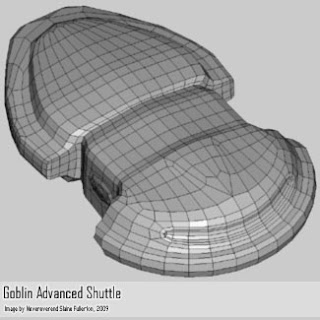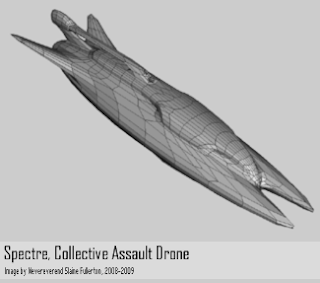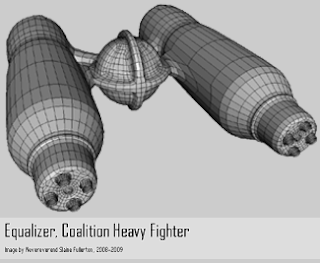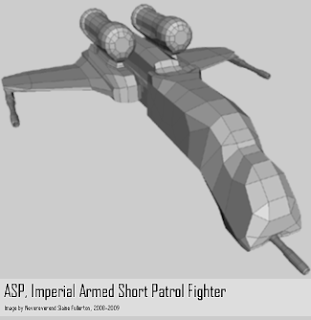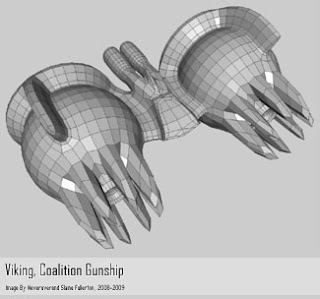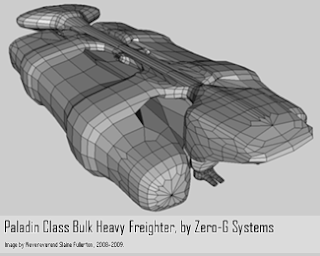The Kokoran Union
Kokora

Age: Roughly 500 years, confirmed.
Planets:
Kokora (6.75 Billion)
Other Populations:
Moon (250 Million)
Arashi Station (1 Million)
Ryoku Station (500 Thousand)
Allies:
None
Enemies:
Pirate Clans (minor; Many Clans have set themselves up in the periphery of Kokoran space without permission or consent).
Attitudes:
Far better to worry about what has yet to be done, than to wonder why others did what they did. Why waste time seeking to know what is unknowable when there is so much more that may be learned so readily? For our Enclave; For our People; For ourselves.
Citizens:
Tend to be calm, even placid. Very practical and pragmatic, they can be quite innovative when they need to be, provided they have a quantifiable hurdle that must be overcome. Are often very much defined by their local communities.
History:
Five hundred and forty seven years ago, the people of Kokora woke up. A thousand enclaves, each containing two-hundred thousand persons locked in cryostasis, suddenly activated and resuscitated their population. No one is certain how long they were in the freeze, since much of their memories were missing. The population was a diverse one, with persons ranging from early adolescence to middle age. Only young children and the elderly seemed to missing. Each individual’s stasis pod was marked with a name and a number/letter sequence – a unique identifier code – that would prove important later, when accessing enclave computer systems. Amnesia was not complete, persons retained a knowledge of language and of many basic motor skills. What seemed lacking was a knowledge of personal identity and personal history and the recollection of how they’d come to be present in cryostasis.
With the awakening of the thousand enclaves, a series of prerecorded messages began to play. It was a first step toward building a civilization – or perhaps, rebuilding, since someone had placed the enclaves and its people. Strange voices and lights directed the populace of each enclave along preprogrammed paths, rotating between four cycles -- exercise and physical conditioning, food and hygiene, rest and rejuvenation, and socialization and reeducation. The unique alphanumeric coding for each individual determined the precise method of each cycle, with different persons having different regimens.
The system was not particularly adaptive; accidents, deaths, and minor mishaps were managed, even anticipated. However, major deviations from “Core Planning” went unnoticed and unaccounted for. Some people even discerned a fundamental truth – the voices and core programming routines were not being guided by any kind of directed consciousness. Quite the contrary, they were like a voice from the past. In short order people began learning to adapt. Utilizing skills acquired through their core programming regimens, individuals slowly drifted certain vague social niches. After twenty years of core programming, suddenly everything changed.
For the first two decades after reawakening, enclaves were locked down and kept in isolation. No one enclave even knew of the existence of the others until the Core programming system re-established the communication network between enclaves. And in one moment, the world became a whole lot larger. Core routines altered to include the addition of inter-enclave communication; socialization modes were adjusted to expand the nature of created social identities. First, enclaves were encouraged to name themselves. Once each enclave had a name, training records became compared, encouraging competition between enclaves, with each one becoming ranked in a variety of different skills. All this time, though, the Core Programming system was assessing individual performances. After ten more years came the major change – People were placed formally specific task functions. Where, previously, persons had congregated into general training cliques, these groups split further into a series of job positions based upon the aptitudes and abilities identified by the Core Programming system.
Most job tasks placed individuals into one of the following groups:
Administrators: Trained in managing resources, social interaction, and decision making.
Technicians: Trained in the design, repair, and maintenance of technology.
Craftsmen: Trained in design, creation, and repair of low technology objects.
Entertainers: Trained in assorted methods of entertaining other people.
Theorists: Philosophers and Scientists whose task is to raise questions, identify new problems, and come up with possible solutions.
Educators: Trained in the operation of Core Programming modules and to assist others in learning.
Healers: Trained in repair and maintenance of living things.
Untouchables: Trained in no Core Programs, the untouchables began as peoples somehow damaged during cryostasis. They emerged knowing a different language, and had considerable difficulty understanding the training regimens
The Core Programming system had obviously been designed to train these individuals in the skills necessary to forge a civilization, yet offered no information about who created the system or the enclaves. Though an incredibly complex computer program, Core Programming was not an AI in its own right, and had no capacity to expand beyond its own preset functions. When training had reached its end, fifty years after releasing the enclave populations from the freeze, it shut itself down and unlocked the enclaves themselves. Upon the entering the outside world, the emerging people noticed that upon every enclave was printed a single word – KOKORA – alongside a numerical enclave designation (from 000-999). The word means, roughly, “The heart of it all”.
The enclaves were themselves vaguely egg-shaped, and each of which was, to some extent, embedded in the ground – leaving, in many cases, only a dome-like structure exposed. The planet itself was of mixed climates, with enclaves placed in all but the most inhospitable of regions. A vast ocean of salt water covered somewhat more than half the area of the world, showing signs of having once been significantly larger. Some wildlife inhabited the area, most prominently insect life. Plants, in some regions, thrived, while in others, there were much harder to find. However, it was their new home.
In time, communities arose around the enclaves, sprawling fields and towns often built in concentric rings around the vast, exposed domes. Even as people left the security of the enclaves, their own particular enclaves remained with them as a clan identity. Indeed, this clan structure would, in short order, come to define Korkoran culture. Enclave inhabitants invariably met one another in person, and not all encounters were peaceful: contention became conflict; conflict became fighting; fighting became battle; and battle became war.
The advent of inter-enclave conflict lead to the creation of a new vocation group among the Kokoran peoples, the Warrior. The trained soldiers of the Kokoran peoples, the Warriors draw their numbers from the other Core Vocations. Thus, each warrior brings with him his own skill base to better serve the military of his enclave. The Warrior vocation trains from the competitive games originally played between enclaves, allowing people to master several skills learned during cycles of physical conditioning and re-education.
From a period of about 150 years after the end of cryostasis until nearly 320 years after cryostasis, the enclaves warred amongst themselves. And war was quite devastating – equipped with the technology gleaned from the teachings of Core Programming, they fought with both blades and plasma rifles. Those clans who adapted first, evolving their technology to meet the needs of battlefield security, survived. Those who were too slow – whether less inventive or less aggressive – were decimated. Stronger clans overran weaker clans; smarter clans tossed in their lot with larger or more battle-hardened clans. In time, the surviving clans banded together; some merged together, while others simply banded together for their mutual benefit. What began as 1000 clans became less than 400 by the time wars ceased. These 400 could be further subdivided into twenty or so “meta-clans”, called “Yamaji” who reflected assorted regional authorities. Persons of the administrative vocation within the clans most prominent in the Yamaji were appointed to serve as “Nobles”. The Nobles of each Yamaji met to discuss the advantages of scaling back their conflicts. Disagreements, they decided, could be settled by a series of games – much like the old competitions put forth by Core Programming. If one factor refused to yield to the outcome of a challenge, then they would risk repercussions from all the other factors. In short, each factor was accountable to the remaining whole. Of course, large conflicts arose again from time to time, but they were always short lived and never flared to the scale which they had known before.
350 years after being freed from cryostasis, the peoples of Kokora began experimenting with space flight, after first noticing dozens of satellites placed in orbit around their world. Within a year, they had seized on of the satellites (also bearing the label KOKORA). Within five years they reached their moon. Within twenty years, they had probes surveying nearby planets within their solar system. Within thirty years, they had a lunar colony and the framework of an orbital station. And within forty years, they detected the presence of the Gateway. Immobile in space, though seemingly connected to nothing, it was an impossible novelty that immediately seized the attention of Technicians and Theorists alike.
By 400 years after Cryostasis, the Kokora knew they were not alone in the universe. Some of the Theorists had devised some ideas regarding “subspace”, a paradimensional stratum mentioned briefly in the teachings of Core Programming. Working with the technicians, they devised a means of tapping into subspace – first to measure, and then, later, to receive and transmit. Strange modulations – waveform packets of identical frequency but differing amplitudes – were the first oddity to be detected. Further investigation revealed that these waveforms were emanating from the Gateway itself. Muted and garbled, it took nearly a year for the Theorists to figure out that the waveforms were language – transmitted communications, actually. Unwittingly, the Kokorans had tapped into the edges of the subnet, though not enough so to decode the language. Amplifying and recording the subspace signals became a priority. The constant, continued chatter worried some of the Administrators enough that a meeting of the Yamaji was called for the first time because of a possible danger from outside themselves. The Yamaji decided that the Kokoran peoples had to present a unified front against anyone who might come to their world; furthermore, the seemed sure that any assault on their region would come from that strange object in space just as the signals did. They outfitted several spacefaring craft with guns, bombs, and other assorted weapons with a plan of destroying it. Even after more than ten years of assaults and rapidly improving weapon technologies, their attempts failed.
Strangely enough, it was not from the Gateway that their first contact would occur. A Collective cruiser malfunctioned when entering Hyperspace and emerged – five years after it entered it's hyperspace window, though less than a month had seemed to pass for the crew of the ship – in the busy space lane between Kokora and its Gateway. The people of Kokora attacked immediately, their potent weapons seriously damaging the Collective vessel. Sensing the nearby Gateway, the Collective transmitted every known gateway code, and luckily for them, managed a link to Nexus Gate One, positioned close to the planet Dust – a world only recently seized by an unaligned militia broken away from the Unified Independence Coalition. The Collective cruiser passed though the gate, followed by a handful of Kokoran gunships, and was destroyed before it could even finish hailing the planet for assistance.
The Kokora Gateway was now illuminated, but the Theorists and Technicians had no luck reopening it after the umbra of light swallowed their gunboats and the alien craft they pursued. What they did not realize was that the Gateways required time between uses proportional to the amount of mass pushed through in its previous use. A Cruiser and a few gunships meant it was not going to stay closed for long. The Yamaji ordered a dozen more gunboats to stand ready in case the gateway opened again, ready to fire upon any additional alien ships that could pass through it.
On the other side of the gate, the ragtag cluster of military vessels under the control of UIC breakaway militia leader (and former Regency officer) Ozkar Rheingold assembled to confront these strange, new ships that had so effortlessly savaged a Collective vessel several times larger than themselves. Commodore Rheingold himself was confused, if these strange ships were not from the the Collective, then they must be from either the UIC or the Enpire itself. Only those two other factions had links to Nexus Gate One. The fledgling Coalition had nothing even remotely similar to this level of military cohesion in small units; Rheingold assumed the aggressors to be experimental Imperial vessels.
The Kokorans manning the gunships were confused – suddenly they were in a different place, near a strange world, with hundreds of alien craft approaching them. The Kokoran war-commander noted the lack of an immediately hostile posture, and instead decided to hold back by the gateway until communications could be attempted. No success was immediately forthcoming. It was a Theorist-turned-Warrior who presented the idea that subspace communication could be more fruitful, since it was from this side of the gate that they'd been detecting the bleedoff of other transmissions. Given a free hand to make the attempt, simple communications was established through subspace – overriding the local SubNet. It was just what Rheingold needed. He met the hail in kind, though he had anticipated hearing Imperial Standard, and not some alien tongue. However, before the palaver could continue, the Gateway opened. Back at the Kokoran Gateway, they'd managed to send the proper signal even as the time:mass delay ended. The Kokoran gunships took their opportunity to return home and report on what they had found. Meanwhile, Ozkar Rheingold spoke with some of his contacts in Imperial space, allowing them to handle the next contact with the Kokora.
Subsequent meetings between the Kokora and the remainder of faction space were tentative at best. The Empire sent a diplomatic envoy to Kokora, who in time (once the language was decoded), met with representatives of the Yamaji. A lot of unanswered questions were found on both sides – each wondering where the other had come from, for example. The Empire offered to train the Kokoran people in the use of the gates (indeed, where those came from was also a mystery, since the Imperial peoples claimed that the Enclaves were not the same technology as the Gateways), in return for diplomatic favor.
Though the Kokoran Union has since become a player in Faction space, it still remains at least partially on the outside. Most factions hail from the reaches of the old Empire, except for the Collective, who the Kokora eye with some measure of distrust. No good answer for how and why an exploratory vessel ended up in Kokoran space was ever given. Nor did the Collective’s government ever push very hard about the assault on their ship. Regardless, Kokora is very different culturally from the other Factions. First and foremost, it lacks any formal religions – indeed, such a concept is too abstract an idea for the self-reliant Kokorans. About the closest one may find among the Kokora are the philosophers among the Theorists and their questions about their own Progenitors. Certainly many Kokorans have wondered who made the Enclaves in which their people awoke, however, few obsess on the question. Most people simply accept it as a mystery, shrugging it off and moving to a topic about which they have information and control.
The Kokoran Union of today maintains the general Vocation groups of the past. Indeed, modern Vocation Groups have changed little; aside from adding the warriors, and expanding the roles of administrators, they had only to provide for the oddness of another. While most of the original Untouchables either died in time, or found their way into other groups at the lowest job levels, a few managed to breed and survive, teaching their language to their children. Modern untouchables often train at low levels of more than one discipline group, or join the Warriors, where their strange history means nothing. They are “untouchable” because they are free to pursue any Core regimen at its lower training levels. However, they have somewhat limited social rights, as they do not fit neatly into the social structure. The Kokoran government’s official stance is an expressed desire to assimilate untouchables into the Warrior vocation, so as to eliminate any new generation of the classless.
Core Programming was the most powerful computer system ever regularly utilized by the people of Kokora, and it is far from a fully functioning Artificial Intelligence. It is not that they could not have gone and created true AI, rather, it never seemed like an important or necessary thing to do. The Kokorans are self reliant, industrious, and so prefer to handle even the most menial task on their own, that using an intelligent machine is an almost insulting proposition. Why use a droid when a technician is more than capable of making any needed repairs on his own. Certainly, the Kokorans have machines as tools, but again, the key point is that they all lack true AI. They gladly use machines to aid their efforts, but no machine should do the work for them. Lastly, unlike the other Factions, only the Kokora lack ship-based AI and thinking droids.
General Reactions to Other Factions:
[Regency]
“Are they conquerors? Are they concerned parents? The Regency must decide, because they cannot be both at once.”
[Alliance]
“Pointless wheedlers and petty politicians, the Alliance plays silly games with the lives of its people.”
[Frontier]
“Let others waste resources on finding new shores in the far frontiers of space. We will be only too happy to take what they leave unguarded or abandoned.”
[Collective]
“Soulless, without harmony – The Collective forgets that what began whole was differentiated for a reason.”
[Coalition]
“Others find them weak, a broken people. However, we understand the virtues of patience and subterfuge. We will be ready when the Coalition acts. Unlike the others, we will not be taken unaware.”
[Interzone]
“Methodical, Innovative, Ruthless, Dangerous.”
[Freespace]
“Calling it a Freespace is a misnomer. The petty fiefdom of a local warlord is no less a government than the bureaucratic labyrinth of Alliance or Regency space.”


